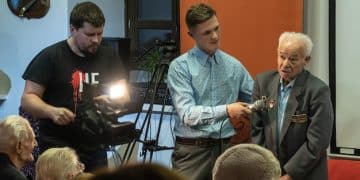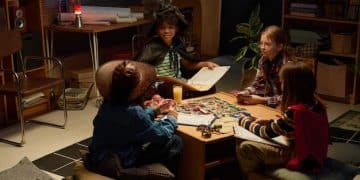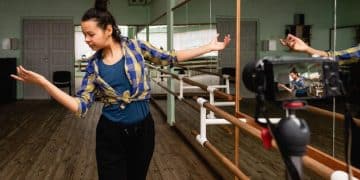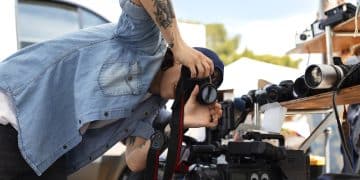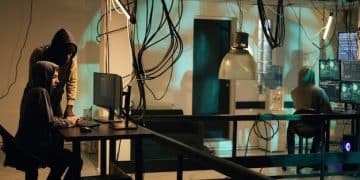The Stunt Coordinator’s Guide: Safe, Spectacular Finales
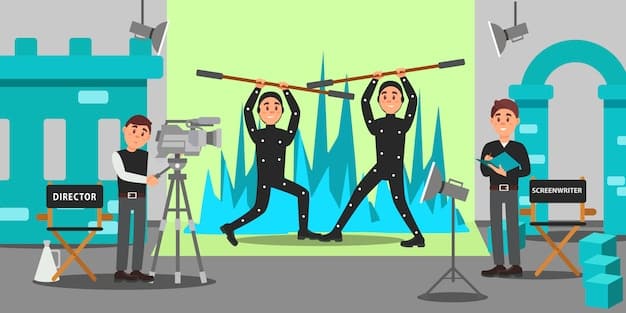
The Stunt Coordinator’s Challenge: Creating Safe and Spectacular Action Sequences for Finales involves meticulous planning, risk assessment, and collaboration to ensure thrilling yet secure conclusions to film and television projects, balancing creative vision with rigorous safety protocols.
The role of a stunt coordinator is crucial in crafting the explosive and memorable action sequences that often define a finale. Their challenge lies in balancing the need for spectacular visuals with the paramount importance of safety. This behind-the-scenes look explores the intricate process of how these professionals create breathtaking finales while mitigating risks.
Understanding the Stunt Coordinator’s Role
The stunt coordinator is more than just someone who plans cool stunts. They are the linchpin between the director’s vision and the practical, safe execution of complex action sequences. Their responsibilities encompass everything from initial concept to final performance.
Responsibilities of a Stunt Coordinator
A stunt coordinator’s role is multifaceted, demanding a blend of creative vision, technical expertise, and leadership skills. They are responsible for ensuring that all stunts are performed safely and effectively, adhering to industry standards and legal requirements.
- Risk Assessment: Identifying potential hazards and implementing safety measures to minimize risks.
- Stunt Design: Conceptualizing and planning stunts that align with the director’s vision and storyline.
- Performer Selection: Choosing stunt performers with the specific skills and experience required for each stunt.
- Equipment Management: Overseeing the selection, maintenance, and use of safety equipment and stunt gear.
Furthermore, the stunt coordinator acts as a liaison between the production team, the director, and the stunt performers, ensuring clear communication and collaboration throughout the process.
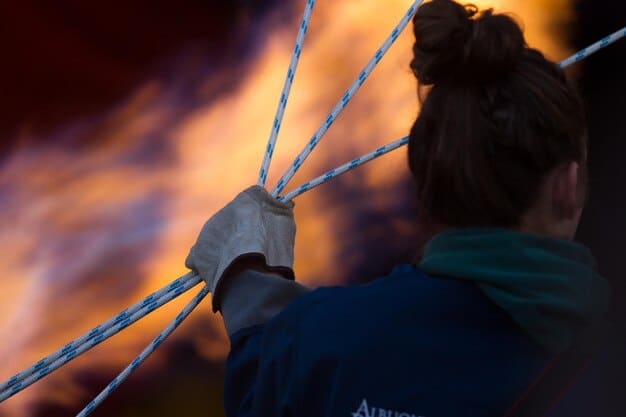
Planning a Finale Action Sequence
Planning a finale action sequence goes far beyond simply choreographing a fight or a jump. It involves a detailed process of visualization, risk assessment, and coordination with various departments.
Initial Consultation and Storyboarding
The process typically begins with a consultation between the stunt coordinator and the director, where they discuss the desired tone, scope, and impact of the finale. This is followed by the creation of storyboards that visually map out the sequence, outlining each action and stunt.
Storyboarding helps to identify potential challenges and allows for early adjustments to the plan. It also serves as a crucial communication tool, ensuring that everyone involved is on the same page regarding the sequence’s flow and objectives.
From these storyboards, the stunt coordinator begins to break down the sequence into manageable components, identifying the specific stunts that will be required and the resources needed to execute them safely.
Safety Protocols and Risk Management
Safety is paramount in any stunt, but particularly so when crafting a high-stakes finale. Implementing rigorous safety protocols and conducting thorough risk assessments are critical to protecting the performers and crew.
Comprehensive Risk Assessment
Before any stunt is performed, a comprehensive risk assessment must be conducted. This involves identifying all potential hazards associated with the stunt, evaluating the likelihood and severity of potential injuries, and implementing measures to mitigate those risks.
This assessment might include factors such as the height of a fall, the speed of a vehicle, the presence of fire or explosions, and the environmental conditions. It also takes into account the experience and skill level of the stunt performers involved.
Implementing Safety Measures
Once the risks have been identified, the stunt coordinator must implement appropriate safety measures. These measures might include:
- Protective Gear: Providing stunt performers with helmets, padding, harnesses, and other protective gear appropriate for the stunt.
- Rigging and Support: Using ropes, cables, and other rigging equipment to provide support and control during stunts.
- Airbags and Landing Pads: Deploying airbags and landing pads to cushion falls and minimize the risk of injury.
- Medical Personnel: Having trained medical personnel on set to provide immediate care in the event of an injury.
In addition to these measures, the stunt coordinator must ensure that all safety equipment is properly maintained and inspected regularly, and that all personnel are trained in its proper use.
The Role of Technology in Modern Stunts
Technology has revolutionized the world of stunt work, providing stunt coordinators with new tools and techniques to create spectacular and safe action sequences. From advanced rigging systems to computer-generated imagery (CGI), technology plays an increasingly important role in modern stunt design.
Advanced Rigging and Safety Systems
Modern rigging systems allow for greater control and precision during stunts. Computer-controlled winches and cables can be used to create smooth, controlled movements, reducing the risk of injury. Additionally, advanced safety systems, such as electronically activated release mechanisms, can be used to quickly and safely detach performers from rigging in the event of an emergency.
CGI and Visual Effects
CGI and visual effects can be used to enhance stunts, making them more visually impressive while reducing the risk to performers. By combining live-action stunts with CGI, stunt coordinators can create sequences that would be impossible or too dangerous to perform in real life.
However, it’s important to note that CGI should not be used as a substitute for real stunts. The most effective action sequences are those that combine practical stunts with visual effects, creating a sense of realism and visceral impact that CGI alone cannot achieve.
Technology also allows for the creation of highly detailed pre-visualization of stunts, allowing the team to plan and refine the action before even stepping onto the set.
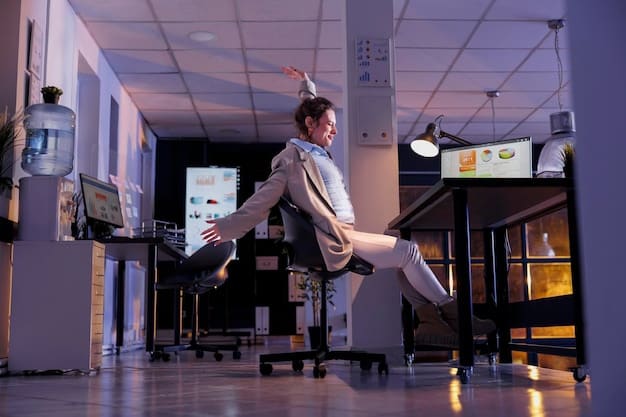
Collaboration and Communication
Effective collaboration and communication are essential for the successful execution of any stunt, especially in a finale. The stunt coordinator must work closely with the director, the camera operators, the special effects team, and the stunt performers to ensure that everyone is on the same page.
Clear Communication Protocols
Clear communication protocols must be established from the outset. This includes regular meetings to discuss the progress of the stunt, daily briefings to review safety procedures, and a system of hand signals or verbal cues to communicate during the stunt itself.
The stunt coordinator must be able to clearly articulate their vision to the team, explain the risks involved, and provide guidance on how to mitigate those risks. They must also be able to listen to the concerns of the team and address them promptly and effectively.
Building Trust and Rapport
Building trust and rapport with the stunt performers is crucial. Stunt performers must be able to trust that the stunt coordinator has their best interests at heart, and that they will not be asked to perform a stunt that is too dangerous or beyond their capabilities.
Notable Examples in Film and Television
Throughout film and television history, there have been numerous examples of finales that have been defined by their spectacular and safely executed action sequences. These finales stand as testaments to the skill and ingenuity of stunt coordinators and their teams.
Case Studies of Successful Finales
Examining case studies of successful finales can provide valuable insights into the strategies and techniques used by stunt coordinators to create memorable action sequences. These case studies can highlight the importance of meticulous planning, effective risk management, and strong collaboration.
Lessons Learned
One key lesson is the importance of integrating safety into every aspect of the stunt design process. Safety should not be an afterthought, but rather a fundamental consideration that informs every decision made by the stunt coordinator.
Another lesson is the value of collaboration and communication. By working closely with the director, the camera operators, the special effects team, and the stunt performers, the stunt coordinator can ensure that everyone is working towards the same goal and that all potential risks are identified and mitigated.
| Key Aspect | Brief Description |
|---|---|
| 🎬 Planning | Detailed planning is key to a thrilling and safe finale. |
| 🛡️ Safety | Risk assessment and safety measures are paramount. |
| 🤝 Collaboration | Teamwork ensures smooth execution. |
| 🧰 Technology | Tech enhances safety and spectacle. |
Frequently Asked Questions
▼
The primary role of a stunt coordinator is to design and oversee the safe execution of all stunts in a film or television production, ensuring both safety and visual impact.
▼
Stunt coordinators assess risk by identifying potential hazards, evaluating the likelihood and severity of injury, and implementing measures to mitigate risks, like protective gear and rigging.
▼
Stunt coordinators typically have extensive experience as stunt performers, along with specialized training in safety protocols, rigging, and risk management.
▼
Communication is extremely important, as stunt coordinators must effectively communicate with the director, crew, and stunt performers to ensure everyone understands the plan and potential risks.
▼
Technology plays a vital role by providing advanced rigging systems, CGI enhancements, and detailed pre-visualization tools, allowing for safer and more spectacular stunt sequences.
Conclusion
Creating safe and spectacular action sequences for finales is a complex task that requires a blend of creativity, technical expertise, and leadership skills. By adhering to rigorous safety protocols, embracing technological advancements, and fostering strong collaboration, stunt coordinators can deliver thrilling finales that captivate audiences while protecting the well-being of the performers and crew.
